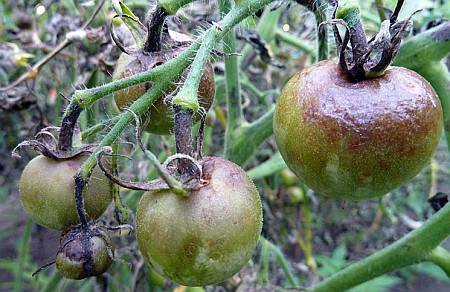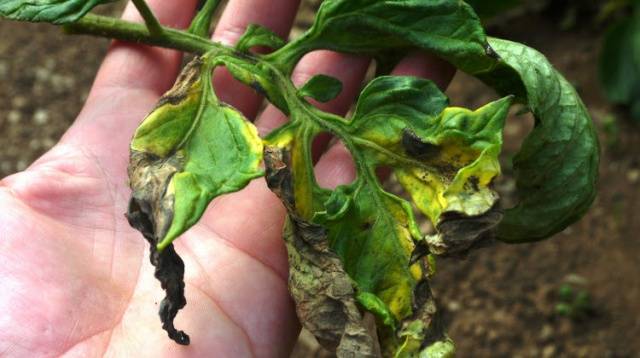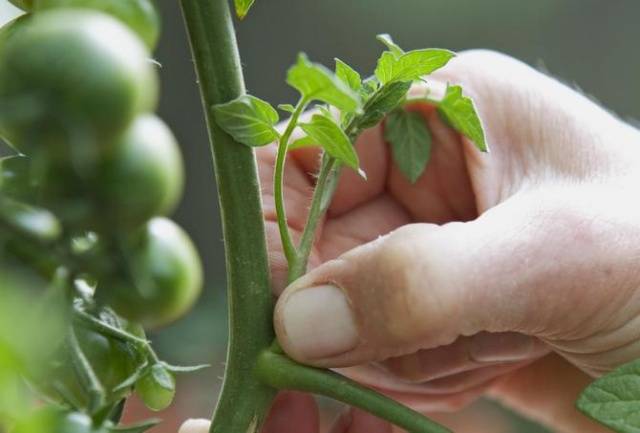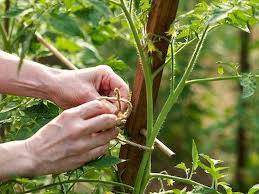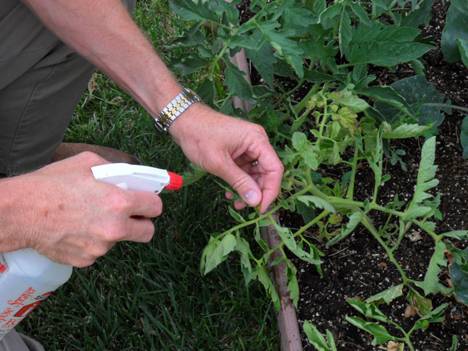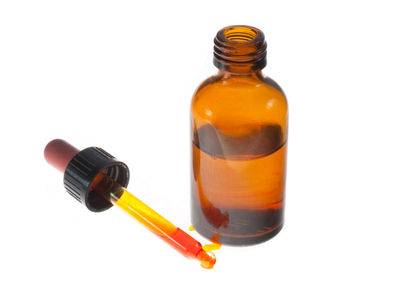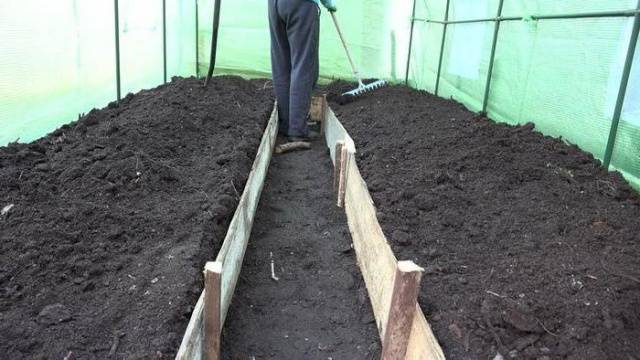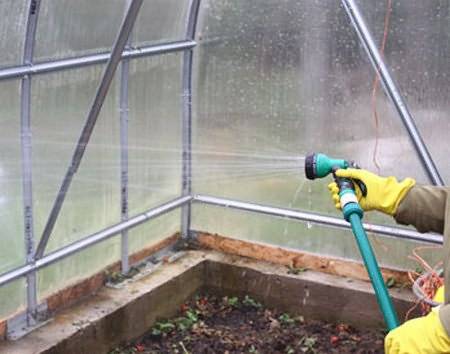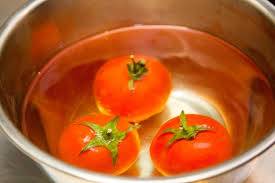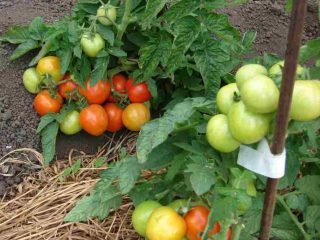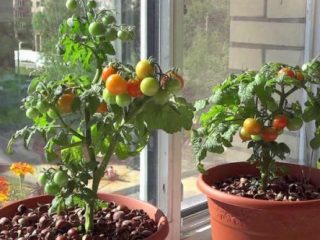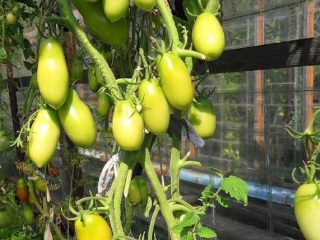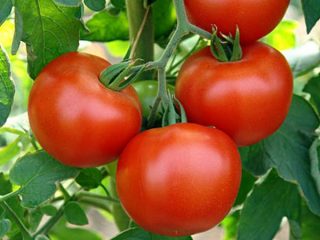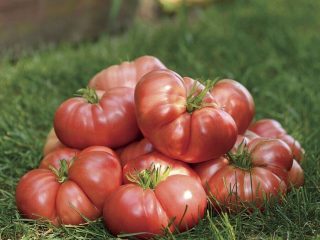Content
- 1 Where does late blight come from?
- 2 Disease prevention
- 3 How to save tomatoes from late blight in a greenhouse
- 4 Traditional methods of combating late blight
- 5 Soil treatment in a greenhouse after late blight
- 6 How to protect tomatoes from late blight
- 7 Treatment of the greenhouse after late blight
- 8 How to preserve tomatoes after late blight
- 9 Conclusion
Those who have experienced the appearance of late blight on tomatoes in a greenhouse know how difficult it is to get rid of it diseaseswithout taking any measures immediately after the first signs of infection. Indoors, this disease appears much more often and spreads faster throughout all plants. Fortunately, there are many folk and chemical methods to combat this disease. But still, it is necessary to start the fight, or, more precisely, prevention in advance, since it will get rid of from late blight very difficult. It is simply impossible to overcome this disease without damaging the crop. Therefore, it is worth finding out in more detail how the fight against late blight on tomatoes in the greenhouse. An equally important issue will also be discussed - how to protect tomatoes from late blight.
Where does late blight come from?
Late blight refers to fungal diseases. The spores of this fungus can be stored in the soil throughout the winter. For a long time, gardeners may not know that their beds are infected with late blight.Potato plants are the first to suffer from the disease, and then late blight spreads to other nightshade crops.
Late blight can remain in the soil for several years, but not progress. Without the appropriate conditions, the fungus will not manifest itself. Moisture is the best breeding ground for late blight. As soon as the humidity in the greenhouse increases due to temperature changes or fog, the disease will immediately make itself felt.
The experience of many gardeners shows that it is impossible to completely cure late blight. The only solution to this problem is to stop the activity of the fungus. By applying preventive measures, you can prevent late blight from becoming more active. In greenhouse conditions, treating the disease is much more difficult. Very often late blight destroys almost the entire crop. If the fungus spreads throughout all the tomato bushes, then there is very little chance of overcoming the disease. In this case, gardeners have to take extreme measures and destroy the fungus along with the tomato plantings.
A warning sign of the disease will be a change in the appearance of the leaves. Almost immediately after infection, they begin to turn yellow, and then dry out and crumble. After the fungus destroys all the leaves on the lower part of the bushes, it “starts” the fruits. The first thing that appears on young tomatoes is small black spots. When they first begin to spread through the fruit, they will not be so easy to notice. But very soon the spots will increase in size, and it will be impossible to ignore this phenomenon.
Disease prevention
Tomatoes are often susceptible to fungal diseases. This vegetable crop is very sensitive to increased humidity levels. The cause of late blight may be improper, too much watering. But dry and hot weather, on the contrary, will allow late blight to not spread. It is also very important to follow the rules for growing and caring for tomatoes. Prevention of late blight tomatoes in the greenhouse is the most effective method in the fight against disease.
It may seem that in bad weather conditions, treating late blight on tomatoes will still not give positive results. But still, you can take steps that will reduce the risk of the disease to a minimum:
- you should choose varieties with high resistance to late blight. Also pay attention to how suitable the tomatoes you choose are for growing in your area. Indeterminate tomatoes are most often affected by late blight;
- Late blight first attacks weak and sluggish plants. Therefore, it is necessary to take care of plant immunity already at the seedling stage. Strong seedlings will be able to withstand this terrible “enemy”;
- all leaves at the bottom of the bushes should be removed. Do not underestimate this point, since pinching is also directly related to the prevention of late blight;
- There is no need to thicken tomato seedlings in the greenhouse too much. It is necessary to follow the correct planting pattern. Bushes should not shade their “neighbors”. The sun is the most important “enemy of late blight”;
- It is necessary to water the plants under the bush, and not along the leaves and stems. On wet tomatoes, the disease manifests itself most quickly;
- To prevent dampness from accumulating in the greenhouse, it is necessary to ventilate it frequently.If the walls in the room are sweating, this is the first sign of increasing humidity levels;
- Mulching the soil will reduce the need for water for tomatoes. Due to the fact that the liquid will remain in the soil longer, the frequency of watering can be reduced;
- Tall varieties of tomatoes must be tied up in a timely manner so that the plants do not lie on the ground. Because of this, the likelihood of late blight only increases. If it is not possible to tie up the bushes, it is better to purchase low-growing varieties;
- Before planting seedlings in the greenhouse, the soil should be treated. To do this, in the fall, the remains of all plants, which are often carriers of late blight, are removed from the beds. It is also necessary to disinfect the walls of the greenhouse itself. If there were no signs of the disease last year, then such thorough preparation need not be carried out.
Fungal spores can also be found in seeds. Therefore, you should be very careful when preparing the seed yourself. Under no circumstances should you collect fruits for seeds from infected bushes. Even if a particular fruit from an infected bush does not show signs of late blight, this does not mean that it is healthy. The spots may not appear immediately.
How to save tomatoes from late blight in a greenhouse
The most popular drugs for combating and preventing late blight are:
- Bordeaux mixture;
- phytosporin;
- copper oxychloride.
Although these drugs have a chemical composition, if the rules of use are followed, they do not threaten human life and health. Treatment with these substances is carried out every two weeks. In specialized stores you can also find drugs such as Oxychoma, Metaxyl and Acrobat. They are less popular, but have also shown their effectiveness. You can determine when to spray tomatoes against late blight by looking at the plant itself. You can start when the first ovaries appear on the bushes. But if the summer this year is rainy and cold, then it will only be better if you start processing the bushes earlier.
Traditional methods of combating late blight
Many gardeners practice using whey in their plots. This is a simple and economical way to prevent late blight. The serum envelops the plant, creating a protective layer that prevents fungal spores from penetrating inside.
A solution of kitchen salt acts in a similar way on tomato seedlings. To prepare it, combine 1 glass of regular salt with a bucket of water in a large container. Next, the solution must be stirred until the salt crystals are completely dissolved. The solution is used to spray bushes. It, like serum, creates a protective layer on the surface of the plant.
You can also spray tomatoes against late blight with an infusion of garlic and manganese. To do this, crush 5 heads of garlic. Now it is placed in a bucket of water and left for a day to infuse. Then 0.5 g of potassium permanganate is added to the liquid. Before use, the mixture is filtered.
Iodine for late blight on tomatoes is a very popular method of combating this disease. To prepare the solution, the following components are required:
- 9 liters of water.
- 1 liter of milk.
- 13–15 drops of iodine.
All ingredients are mixed and the tomatoes are treated with the prepared solution.
Soil treatment in a greenhouse after late blight
Many gardeners do not attach much importance to cultivating the soil in a greenhouse. Because of this, the disease is transmitted to plants from year to year. Phytophthora spores easily tolerate cold while in the ground, and immediately with the onset of warmth and appropriate conditions they will make themselves felt. The accumulation of fungi every year makes the disease more aggressive. And in the near future, all known methods will simply be powerless.
To prevent late blight, the soil should be treat with a solution of phytosporin. If the disease is already advanced and appears every year, it is necessary in the fall, immediately after harvesting, to treat the soil with a stronger preparation in order to prevent the appearance of the disease next year.
The new soil must be fertile. Under no circumstances should it be taken from beds where nightshade crops previously grew, because late blight affects them first.
How to protect tomatoes from late blight
Most often, late blight appears on greenhouse tomatoes in August. The fact is that late blight loves temperature fluctuations, and it is during this period that the weather becomes unstable. In open ground, tomatoes can be sick throughout the season.In a greenhouse it is much easier to create the necessary conditions for the normal growth of tomatoes.
Starting in August, gardeners are advised to use additional methods of heating the greenhouse at night. For example, you can place a barrel of water in the middle of the greenhouse. During the day it will heat up completely, and at night it will give off heat to the plants. You can stretch a film or other covering material over the tomatoes, which perfectly protects the plants from the cold.
Treatment of the greenhouse after late blight
If it so happens that the tomatoes in the greenhouse do become ill with late blight, then it is necessary to protect next year’s harvest. To do this, a thorough treatment of the room itself is carried out. To reduce the likelihood of late blight to a minimum, you must follow these rules:
- delete everything weeds and vegetable remains. All this must be burned so that late blight does not spread to other plants. Even when rotted, they remain dangerous, so the remains of vegetation from the greenhouse are not suitable for making compost.
- In a greenhouse made of polycarbonate or glass, all walls and windows should be thoroughly washed. You can add baking soda to the cleaning water.
- After cleaning, it is necessary to disinfect all surfaces with a solution of special preparations. A fungicide such as phytosporin is ideal.
- If all the plants in the greenhouse are sick, you will need to replace the top layer of soil. As mentioned above, the fungus does very well in the soil in winter.
How to preserve tomatoes after late blight
Infected tomatoes will not be able to be stored for long, even if there are no visible signs of disease on the fruit. Tomatoes from an infected bush will soon begin to deteriorate anyway.In order to somehow prolong the freshness of grown tomatoes, it is necessary to immerse the fruits in water preheated to +60°C. Tomatoes should be kept in it for several minutes until the fruits are thoroughly warmed up. But, you need to make sure that they do not cook.
Conclusion
Late blight on tomatoes in a greenhouse is the most common disease of this crop. It can appear unpredictably already during the ripening of fruits and simply destroy the entire crop. Therefore, many gardeners are wondering how to treat tomatoes against late blight. It seems that today there are no untried methods left on how to deal with late blight on tomatoes in a greenhouse. But no one has managed to find a truly effective method. All known methods of control only help to stop the spread of this disease.
But still, we fight late blight by carrying out prevention and following the rules for caring for tomatoes. Protecting tomatoes from late blight means timely watering, ventilation of the greenhouse, maintaining temperature conditions and other preventive measures. When faced with this disease, do not despair, because it is still possible to save the tomato crop from late blight.
